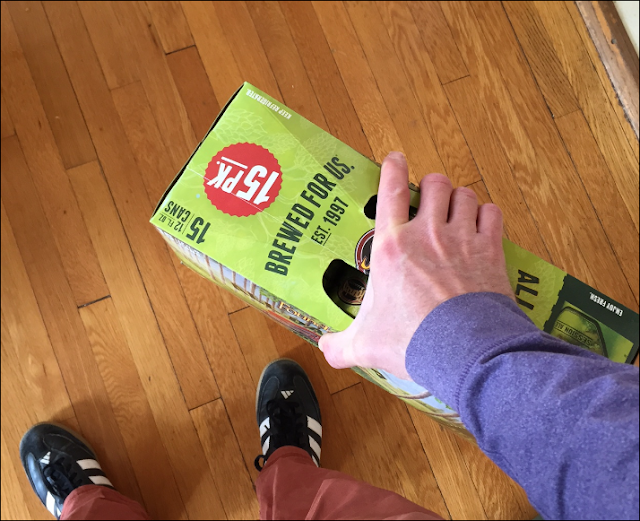None of this would be possible without the RCTM hangboard training and the Forge!
Wednesday, March 23, 2016
Thursday, March 10, 2016
Kilter/Moon Hybrid update #1
These are 7 sets of Kilter holds that we added to our Hybrid Wall today.
(Top Left) Noah Small 5- Rounded Crimps; Winter XL 1-Slugs (Right)
(Second Row Left) Noah Large 5- Overjugs, Winter Large 5- Jugs (Right)
(Third Row Left) Noah Medium 17- Mini Jugs, Winter Small 9- 2 pad incut Edges (Right)
(Bottom Right) Teagan Medium 1- Mini Jugs
This project currently uses the black and white moon sets.
The Kilter / Moon Hybrid
Angled shot
Beta Fish nearing completion
I am really glad that we used the Moon grid layout for the t-nuts, and I am even happier that we also added the additional grid. Moon has you making a 6 by 11 grid on each 4X8 sheet, which is not very dense (by home woody standards) so the extra 5 by 12 grid we added in the centers gives us plenty of options. I would say that we still have room for 200 more holds on our moon/kilter hybrid wall if we want to add them. Using this double grid allows us to set up any moon problems that we want but also integrate other holds.
We kept all of the Kilter holds on the original Moon grid, except for a few holds in the middle where we ran out of space. If we want we can get another 50 kilter holds (perhaps in Red) to flesh out the wall with more compact, interesting holds.
The huge plus of the moonboard is the 100's of problems per set up, and the style of problems. Moon problems are characterized by limited feet and big powerful moves between challenging holds. In terms of style they are super intense limit problems- like a cross between campus training and bouldering.
I would not make a moonboard and just leave it with the standard holds in a home wall because the hold selection is too limited and extreme for most climbers. I love the Moonboard and the problems, but the addition of the Kilter holds adds so much extra functionality without detracting from the moon problems.
Kilter holds have have a reputation for being awesome but also expensive. However, for a use like this intense training wall they are more than worth every penny. When it comes to the small space of a moonboard the opportunity cost for each hold has to be weighed against the quality of the hold and what it contributes to the wall. The Kilter holds we chose gave us the best proposition for money and space. The overjugs are incredible- super comfortable, more than positive, and non obtrusive. The slugs are slopey jugs that are hard to match and surprisingly compact for how deep they are.
Kilter holds have have a reputation for being awesome but also expensive. However, for a use like this intense training wall they are more than worth every penny. When it comes to the small space of a moonboard the opportunity cost for each hold has to be weighed against the quality of the hold and what it contributes to the wall. The Kilter holds we chose gave us the best proposition for money and space. The overjugs are incredible- super comfortable, more than positive, and non obtrusive. The slugs are slopey jugs that are hard to match and surprisingly compact for how deep they are.
The moon sets (black and white) are very rough because they were shaped from a lower density foam. The shapes might seem primitive and a bit uncomfortable. However, they are interesting and reminiscent of the uneven shapes you find on hard limestone routes (like at American Fork or Logan Canyon) because they are often angular in ways that don't make them easy to use. They require extra attention and effort to latch safely and to use. I think this can be a good type of realism to integrate into your indoor training, but it is also a bit dangerous. You cannot just throw for these holds with impunity-- you have to be careful or you will tweak something (as I learned a month ago).
There are no jugs and no deep slopers in the moon holds. The moon wall is not ideal for warming up (unless you are uber strong). The Kilter sets we got largely fill these missing niches. We can warm up on our hybrid wall as well as do 45 move circuits.
The Kilter Overjugs set are super positive and comfortable, so we have actual V0/V1 problems to play around with and warm up and down climb. The hybrid between the Kilter and Moon holds makes both sets much more valuable and makes the wall usable for much more varied climbing.
The Kilter Overjugs set are super positive and comfortable, so we have actual V0/V1 problems to play around with and warm up and down climb. The hybrid between the Kilter and Moon holds makes both sets much more valuable and makes the wall usable for much more varied climbing.
I did some endurance work at the end by climbing up and down the hybrid wall until I was too tired / sore to continue. That is something that is not possible on a standard moonboard unless you are very, very strong.
Subscribe to:
Comments (Atom)




